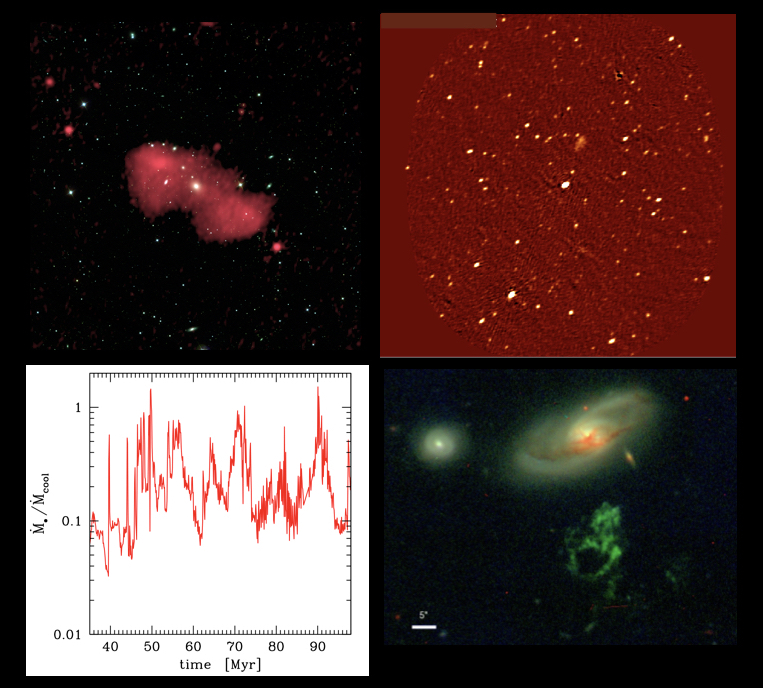Daily Image
04-09-2017Archaeology of active galaxies across the electromagnetic spectrum
| Submitter: | Raffaella Morganti |
| Description: | The timescales over which galaxies form and evolve are outside the reach of human life. Thus, astronomers need to use indirect methods to derive the history of galaxies. Important events happen during the life of a galaxy and they can change the course of its evolution. In particular, when the central supermassive black hole (SMBH) is active, it can release huge amounts of energy which can affect the surrounding gas and can impact the evolution of the entire galaxy. This effect has been recognised as crucial for explaining why galaxies look the way they do. But how often and for how long is a SMBH active? This is not an easy question to answer. Astronomers are working hard to address it by using observations in different wavebands and perform a kind of ‘archaeology’ to trace the signatures of past nuclear activity. Extremely interesting is the role that the low-frequency radio telescopes and, in particular, LOFAR have in this. They offer new possibilities for major steps forward in this field. At low radio frequencies, where low-energy electrons can radiate for longer times, the astronomers can explore the phases in which a radio source is dying and, in some cases, is re-borne: an ideal task for LOFAR. The status of the field and the progress on this fascinating topic are described in a review article appearing this week in Nature Astronomy, “Archaeology of active galaxies across the electromagnetic spectrum https://www.nature.com/articles/s41550-017-0223-0 )” by Raffaella Morganti (a download can also be found at http://rdcu.be/vlUw ). Among many things, the review summarises some of the recent results obtained by LOFAR, including those from the ERC-RadioLife group. |
| Copyright: | ASTRON, Oxford University Press, WIYN / William Keel / Anna Manning |
| Tweet |  |
